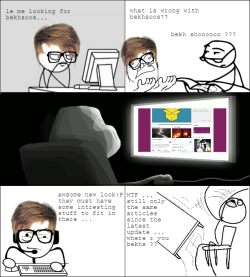Self-defense: By Whom? From What?
616 viewsSelf-defense is an amazing tool to fight discrimination, by reacting to its violence in a creative and self-fulfilling way. It prevents the sense of guilt and humiliation following the feeling of being a victim. It opens spaces of free expression for marginalized groups and individuals.
In this perspective, it can be understood as a set of techniques people can use to react to different kinds of abuses and aggressions, and to overthrow the social unbalances legitimizing their aggressors. The questions here are: How are these techniques going to suit the skills of those who should employ them? How are these techniques going to suit the situation in which the aggression takes place?
An effective self-defense should be grounded in a clear understanding of the nature of the specific violence targeting us. You will not react in the proper way to somebody who wants your money, if you are expecting to be raped, especially when self-defense techniques are used to prevent an aggression taking the first move ourselves. We might decide to go friendly, aggressive or even to go sexy, according to the kind of aggression we feel is about to happen.
Effective self-defense has a lot to do with acting. The purpose is to get yourself out of an uncomfortable or dangerous situation. Wild and uncensored performance is key to widen the range of strategies available for you. Awareness about the scene, the space around you and your physical interaction with others, objects and people is also useful. Imagine you have to avoid being trapped, or to sneak out of a narrow space, or that you need to play on distracting the aggressor.
Self-defense is also about one’s own well-being and self-confidence. That’s why not all techniques fit different people targeted by different kinds of violence. This article presents self-defense as a situated knowledge, and thus focuses on a specific situation (who and what): women (queers and straight) and lesbians’ self-defense from gender-based violence.
Gender-based violence (GBV) has become a trendy expression in the glossary of social workers and women’s rights activists, as the word gender caught on. It is certainly a powerful tool for inclusive advocacy, that allows for lobbying for women’s rights together with the rights of children, lesbians, gays, bisexuals, queers, transsexuals and transgender people.
At the same time, as an all-encompassing definition, it runs the risk of spreading confusing assumptions undermining awareness-raising processes within each group. It can erase critical differences, which should be taken into account to identify the self-defense tools and strategies most suitable to each person.
Our bodies are the main actors in our self-defense, and different bodies are targeted by different kinds of violence, according to the way they are perceived by society. Female bodies are largely targeted in their everyday life by that kind of abuses known as sexual harassment, including verbal or physical harassment, groping, bullying, stalking and rape. Such violence might take specific features according to the specific behaviour and/or social status of each woman. Still, it might target any woman, queer, heterosexual or lesbian, regardless of their gender identity and/or sexual orientation. Do we recognize in this specific kind of aggression a common character that distinguishes it from, for example, sexual abuse of children or bullying of gays? What do we mean by saying that this kind of violence is based on gender?
Female bodies are targeted by a common set of social expectations originally related to their reproductive capacity. Violence targeting women and lesbians definitely aims to drive all females to attend such expectations, regardless of their physical shape, attitudes and/or appearance. Its original and ultimate goal is to ensure female bodies conform to a given gender. Such gender – “femininity” as it is known in common sense – is designed and constructed to ensure exploitation of female bodies into reproductive work.
In my opinion, violence against female bodies is mainly based on the gender constructed for them within patriarchal power structures. The features of this violence vary according to the gender autonomously chosen, performed and embodied by each woman and lesbian. But its distinctive feature lies in the aim of this violence: to ensure patriarchal control over the female body. The aim of self-defense for women and lesbians is to allow them to keep on identifying in their female bodies, reject humiliating conditions and cultivate their love for their bodies.
Such understanding of GBV and violence points out the importance of developing customized self-defense tools to be shared among those subjects targeted by the same kind of violence.
Women and lesbians share the experience of a specific kind of violence. In this context, by women and lesbians, I also mean queers, bisexuals and straights willing to identify in their female bodies. Women born transsexuals who choose not to identify in their female bodies, as well as M-to-F transsexuals who have grown up into male bodies, have their own specific experience with GBV. They develop their own specific tools and techniques of self-defense.
Self-defense for women and lesbians promotes solidarity bonds crucial to the support of female bodies in rejecting humiliation, allows them to fully develop their potential and autonomously choose the gender they want to perform.
- Contributed by Giulia





Leave a Reply